Special Report
26 Completely Different New Year’s Days Around the World

Published:
Last Updated:

While the new year has already commenced for those following the Gregorian calendar, the most widely used calendar in the world, the Chinese New Year, has yet to begin. Tuesday Feb. 5 marks the first day of the Year of the Pig, one of 12 Chinese zodiac signs that rotate every year.
People all around the globe ring in the new year, but not all celebrate the same way Americans do, or even on the same day. Though people have different traditions and customs, most feel grateful for the year that passed and optimistic about the one that’s about to begin. Several New Year’s celebrations stretch across several days, like the Burmese and Thai New Year. The Chinese New Year is the longest, lasting 15 days.
To identify the different civil and religious calendars and the date when the new year begins, 24/7 Wall St. reviewed a range of internet sources. We also heavily researched the various customs and traditions each culture practices. New Year’s dates are given by their corresponding dates on the Gregorian calendar. We excluded ancient calendars from this list.
Click here to see every New Year’s date from every calendar.
Many calendars have religious foundations. Some calendars are based on the lunar cycle, some on the solar cycle. The Chinese calendar is lunisolar. Because of the different cycles, the different New Year’s — in relation to the Gregorian calendar — either fall on the same day every year, or occur over a range of days. For example, the Ethiopian New Year falls on Sept. 11 every year, whereas the Chinese New Year can take place anytime between Jan. 21 and Feb. 20.
Of course, the beginning of a new year cannot come and go without some sort of celebration. In some cultures, there are rituals that honor the year that lapsed and customs that welcome the coming year, specifically auspicious prayers in hopes of receiving a bestowal of blessings. The celebrations differ from culture to culture.
The Balinese welcome the new year by spending the entire day in absolute silence. That’s much different from the Burmese, who celebrate the new year with a three-to-four-day-long water festival. The Thais have a custom of pouring water on the elders of society in order to receive blessings for the new year.

1. Aboriginal Murador
> Country where calendar is observed: Western Australia
> Name of new year:
> Date of new year: Oct. 30
Western Australia’s Aboriginal tribe of Murador celebrates New Year’s on what coincides with October 30 on the Gregorian calendar. While the new year doesn’t appear to be celebrated by many tribe’s people today, there are many festivals in Australia that celebrate Aboriginal Murador’s culture throughout the year.
[in-text-ad]
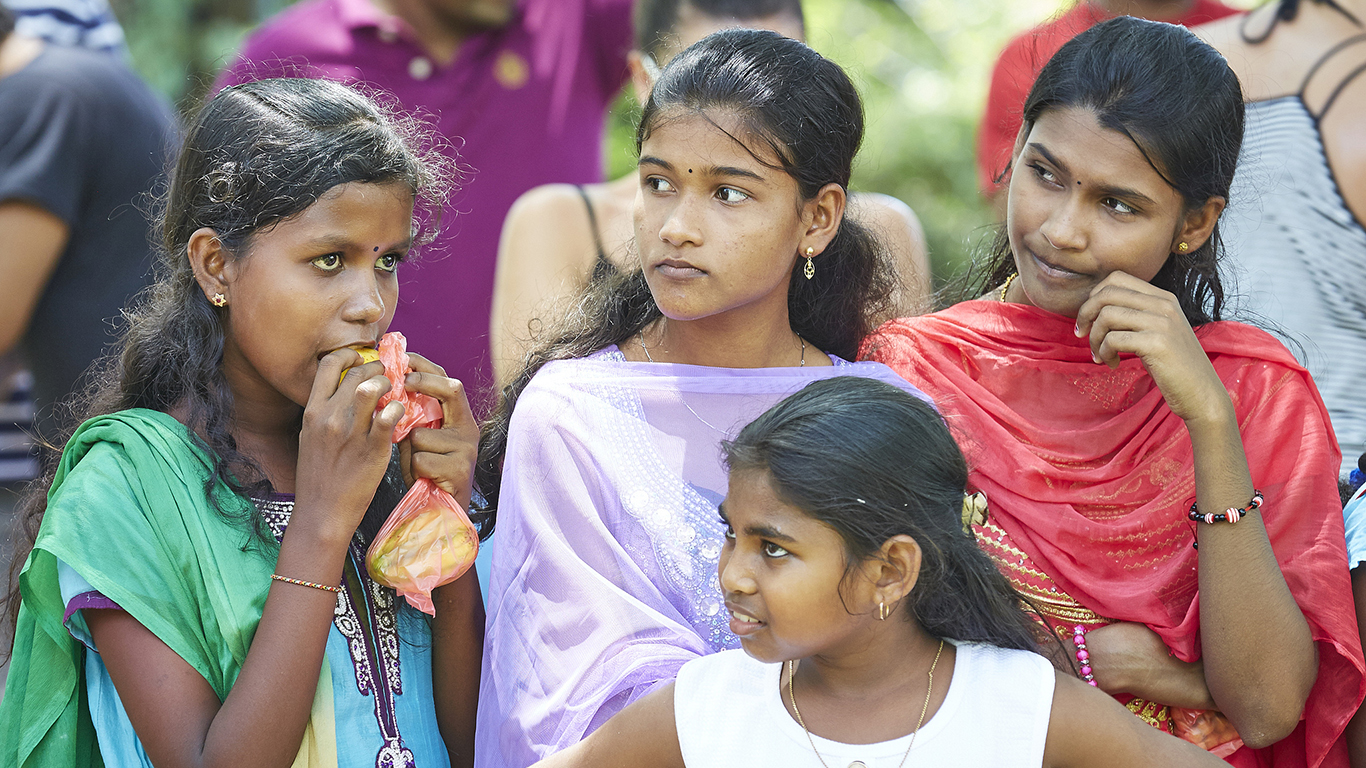
2. Sri Lankan New Year
> Country where calendar is observed: Sri Lanka
> Name of new year: Aluth Avurudda
> Date of new year: April 13-14
The Sinhalese and Tamil Hindus of Sri Lanka observe New Year’s in mid-April by opening their doors to family, friends, and other members of the community. The new year is celebrated through various customs and rituals, namely boiling milk in a new earthen pot until it boils over, which symbolizes prosperity. Sweets made of rice and coconut oil, such as traditional kavum, and dishes with plantains are also prepared and served.
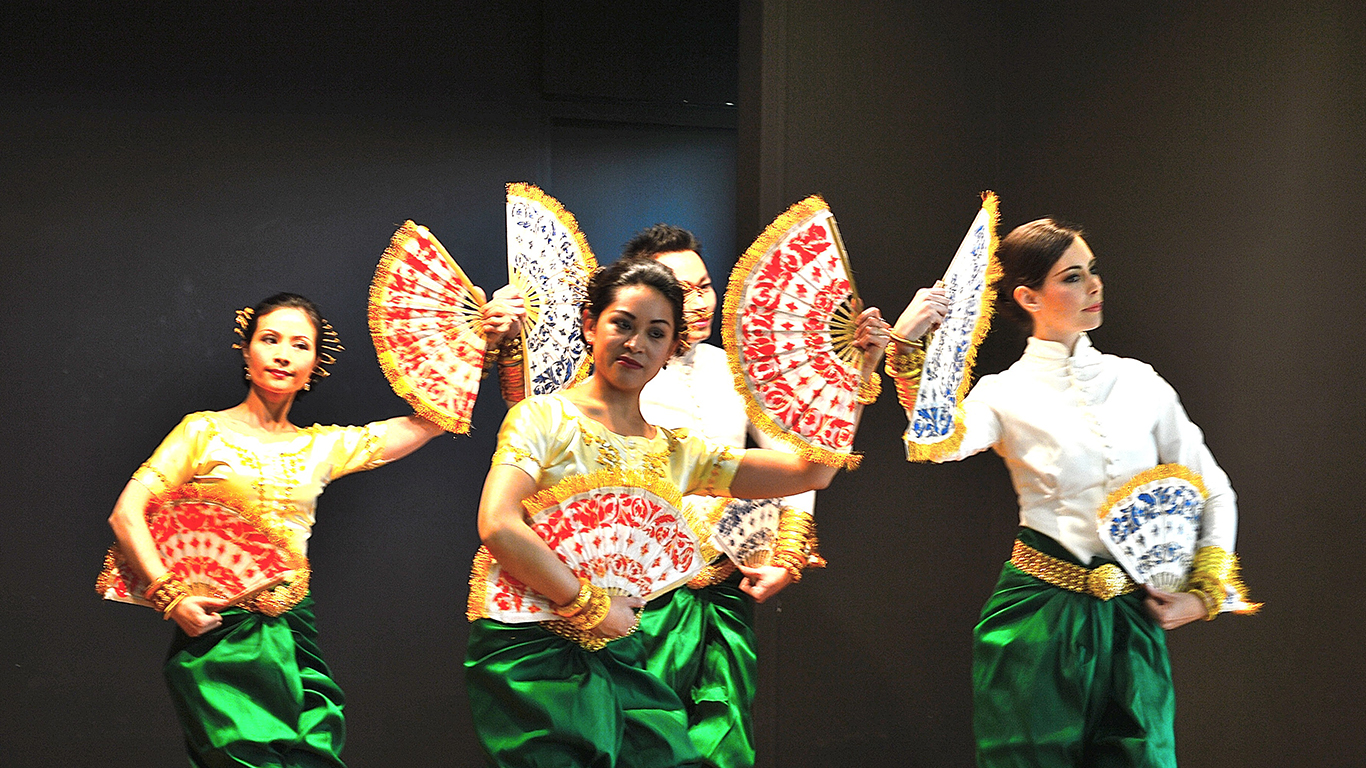
3. Cambodian New Year
> Country where calendar is observed: Cambodia
> Name of new year: Chol Chnam Thmey
> Date of new year: April 13-15
Imagine walking out of your office for three days — without having to request time off — to celebrate New Year? In Cambodia, and in a small community in Vietnam, April 13 to 15 is devoted to purification ceremonies, temple visits, and playing traditional games with family and friends.
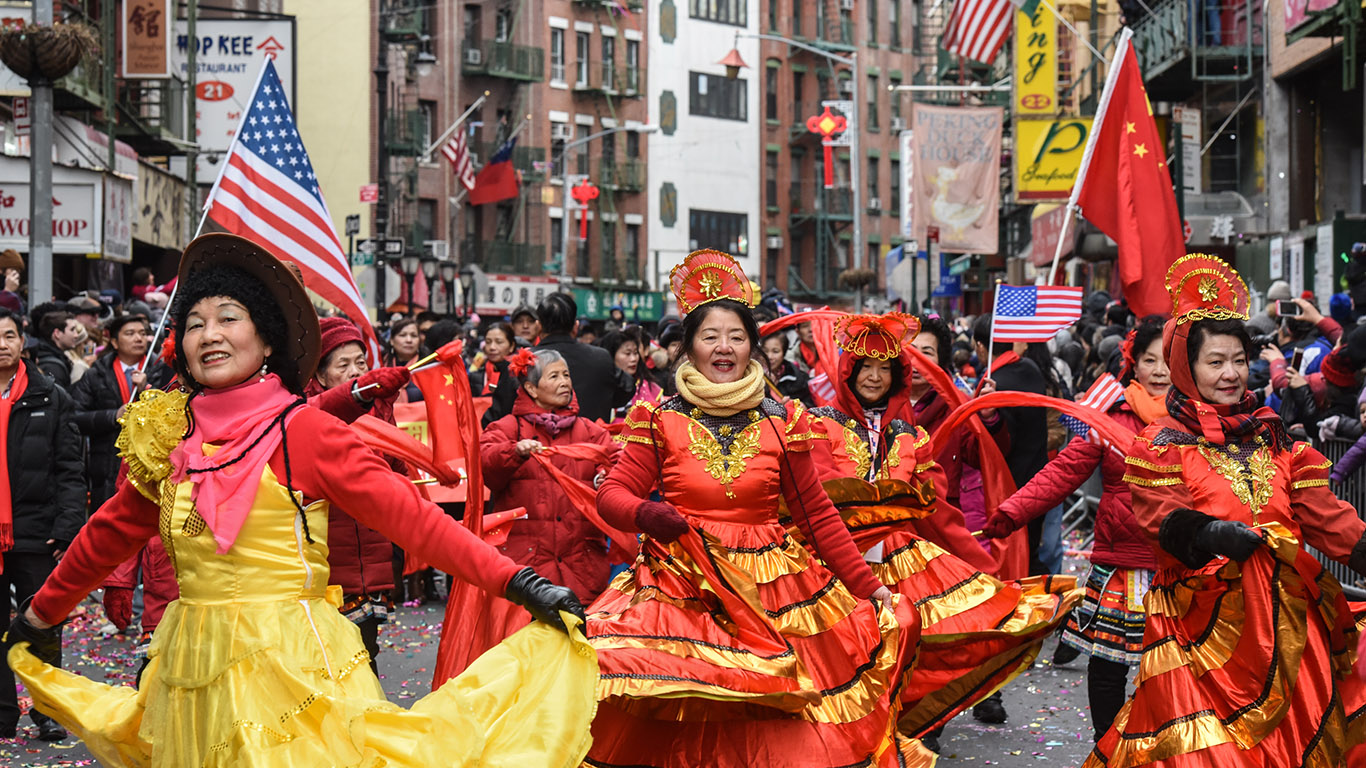
4. Chinese New Year
> Country where calendar is observed: China
> Name of new year: Chūn jié
> Date of new year: Between Jan. 21 and Feb. 20
The Chinese New Year falls on different dates every year because it is based on the lunar calendar. The official holiday is seven days long, but the celebration typically lasts for more than two weeks. More specifically, the celebration begins on the Lunar New Year’s Eve and lasts for 15 days. 2018 is the year of the dog and will be celebrated with a week off from work, eating traditional foods such as eight treasures rice and watching dancing dragon performances. The celebrations close with the Festival of Lanterns.
[in-text-ad-2]
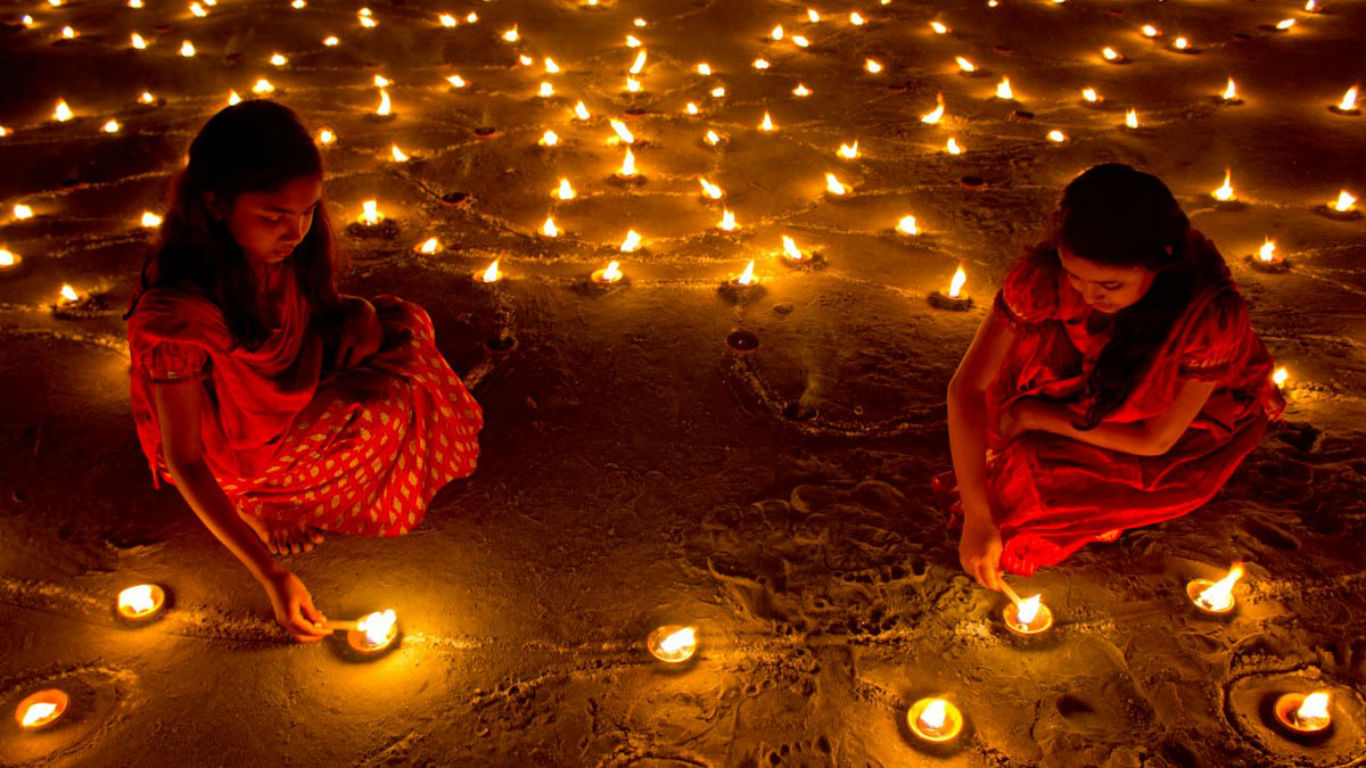
5. Marwari and Gujarati New Year
> Country where calendar is observed: India
> Name of new year: Diwali
> Date of new year: Mid-October-mid-November
Otherwise known as the Festival of Lights, Diwali falls between mid-October to mid-November, depending on the moon’s cycle. This year, Diwali will fall on Oct. 27, but celebrations will have begun two days prior and last for a total of five days. Diwali, the third day, is the most important day of the festival. On this day, observers say special prayers to several gods and goddesses and scatter lit candles and small clay lamps throughout the house.
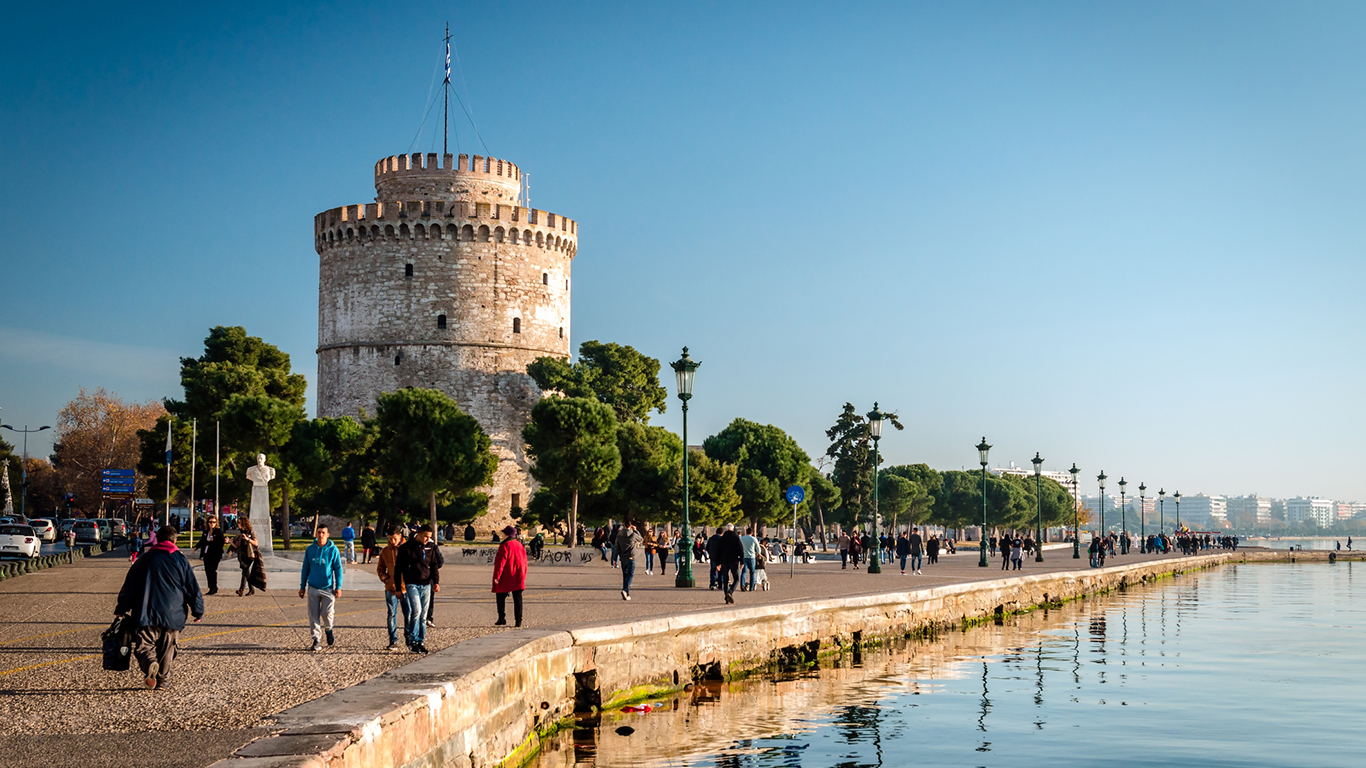
6. Eastern Orthodox Church New Year
> Country where calendar is observed: Russia, Macedonia, Serbia, Ukraine
> Name of new year: N/A
> Date of new year: Jan. 14
Like the Gregorian New Year celebration, the Julian New Year is celebrated by people of the Orthodox Church with entertainment, fireworks, lots of drinking, and consuming large meals. In Macedonia, it is traditional to eat homemade pita bread with a coin inside. Whoever finds the coin is said to have luck the next year.
[in-text-ad]
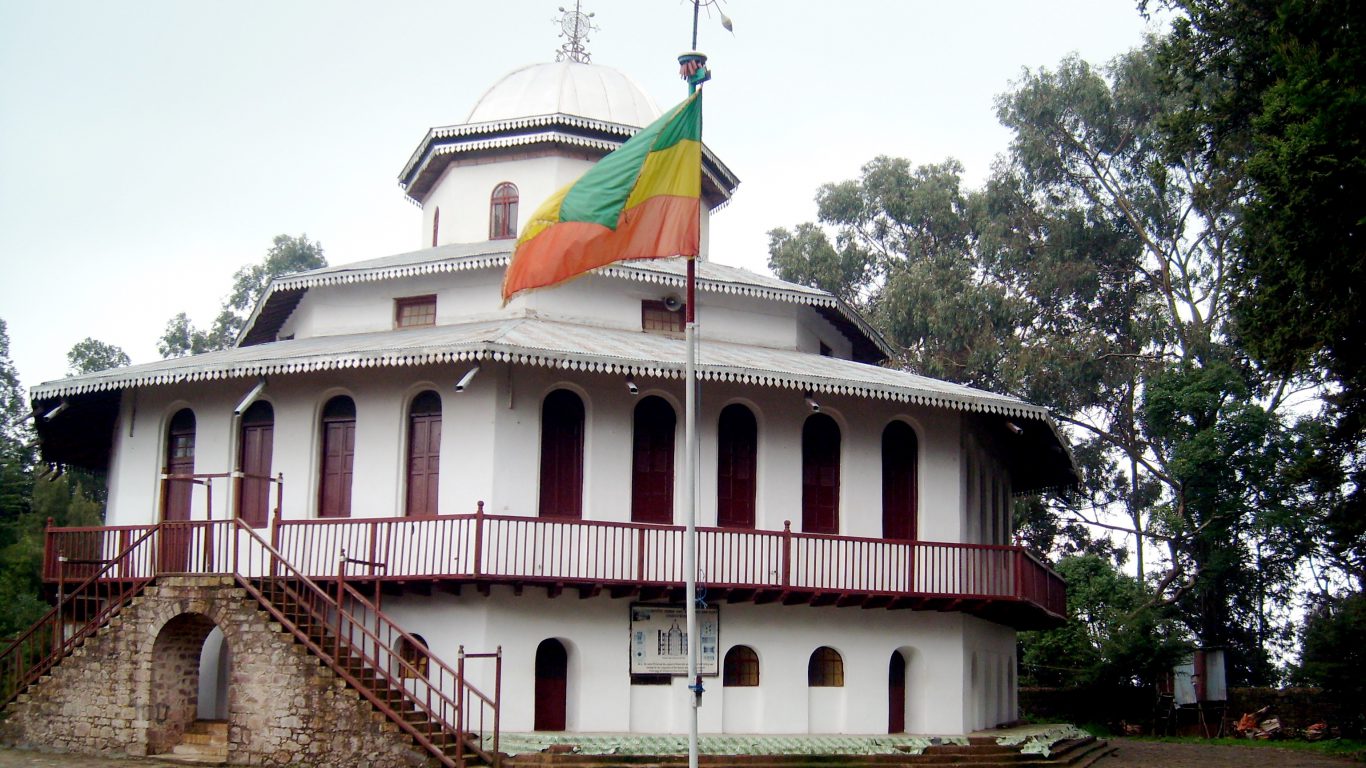
7. Ethiopian New Year
> Country where calendar is observed: Ethiopia
> Name of new year: Enkutatash
> Date of new year: Sept. 12
Sept. 11 marks the day of the new year in Ethiopia. By this time, the lengthy rain season has come to a close, leaving behind a countryside flourishing in yellow daisies. That’s fitting because Enkutatash in Amharic, the native language of Ethiopia, translates to “gift of jewels.” To celebrate New Year’s, Ethiopians sing songs unique to the day and exchange bouquets of flowers. Of course, there is plenty of eating and drinking, too.
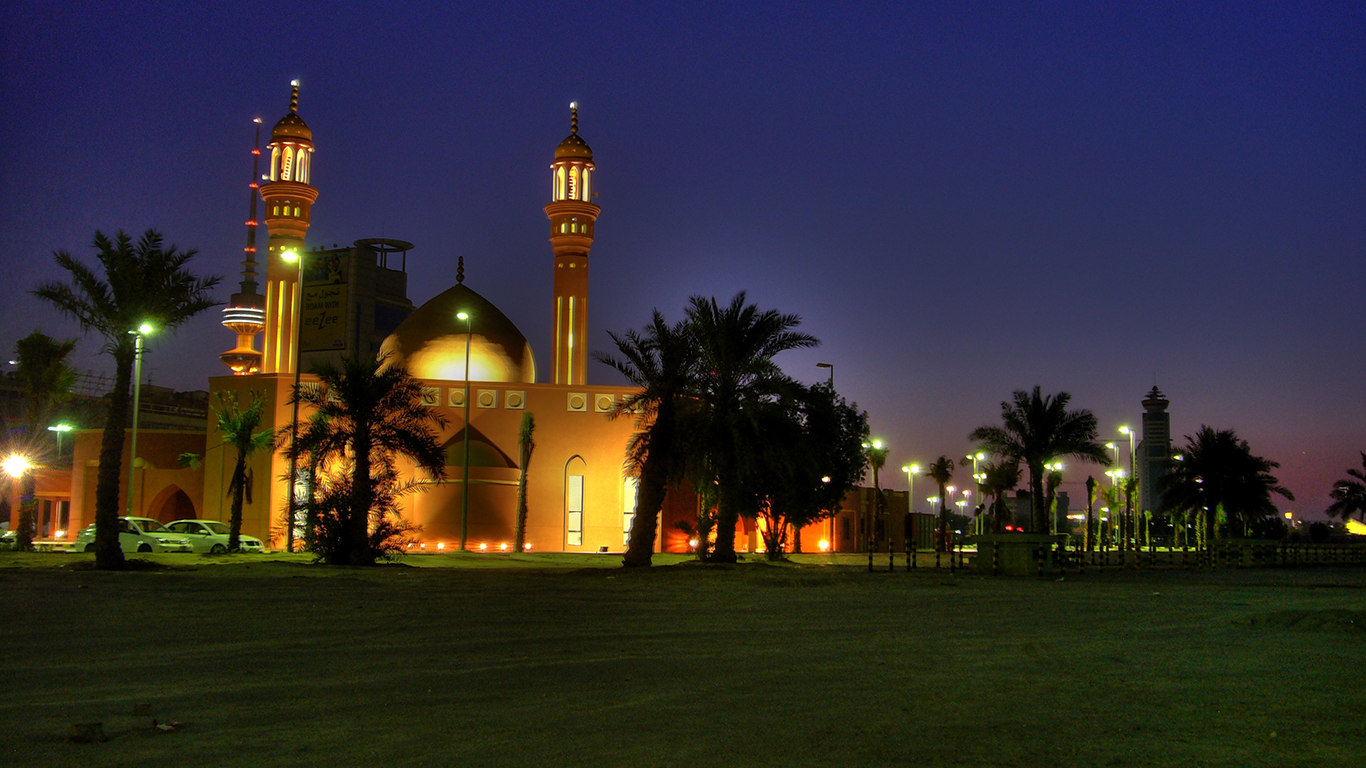
8. Islamic New Year
> Country where calendar is observed: Muslim populations worldwide
> Name of new year: Hijri
> Date of new year: Sept. 22
The Islamic New Year marks the journey of the prophet Muhammad from Mecca to Medina. Muslims often make resolutions on the new year. However, the occasion and the sacred month of Muharram are observed differently by the two largest branches of Islam, Shiite and Sunni. Shiite pilgrims journey to their holiest sites to commemorate a seventh-century battle, while Sunnis fast to celebrate the victory of Moses over an Egyptian pharaoh.

9. Hindu New Year
> Country where calendar is observed: Hindu populations worldwide
> Name of new year: Vikram Sawant
> Date of new year: March 22
India is a multifaceted country, full of different religions, dialects, and languages. Hindu populations worldwide do not all share the same new year day and rituals. In fact, there are there at least three common new year days in the Hindu calendar. While the new year dates differ, many fall in March and April especially. Exchanging gifts, wearing new garb, lighting oil lamps, and decorating the house with blessing-inducing, colorful flowers are all examples of some of the traditions.
[in-text-ad-2]

10. Assyrian New Year
> Country where calendar is observed: Northern Iraq, northeastern Syria, southeastern Turkey, and northwestern Iran
> Name of new year: Kha b’ Nissan
> Date of new year: April 1
Kha b’ Nissan means the “First of April” and is a spring festival celebrating the rebirth of nature. The celebration involves parties and parades, and celebrants wearing traditional Assyrian clothes dance in parks. One of the customs, known as Diqna d’ Nisan, or “Beard of April/Spring,” involves Assyrian girls gathering flowers and herbs that are hung from roofs.

11. Gregorian New Year
> Country where calendar is observed: International
> Name of new year: New Year’s
> Date of new year: Jan. 1
New Year’s is one of the most anticipated holidays in myriad countries that follow the Gregorian calendar. The majority of celebrations occur on Dec. 31, the eve of the new year, with many spending the evening with family and friends in house parties, galas, and fancy restaurants. The peak of New Year’s celebration involves a countdown to the stroke of midnight to bring in Jan. 1, and often includes watching fireworks or watching the ball drop either outdoors or on TV from the comfort of home.
[in-text-ad]
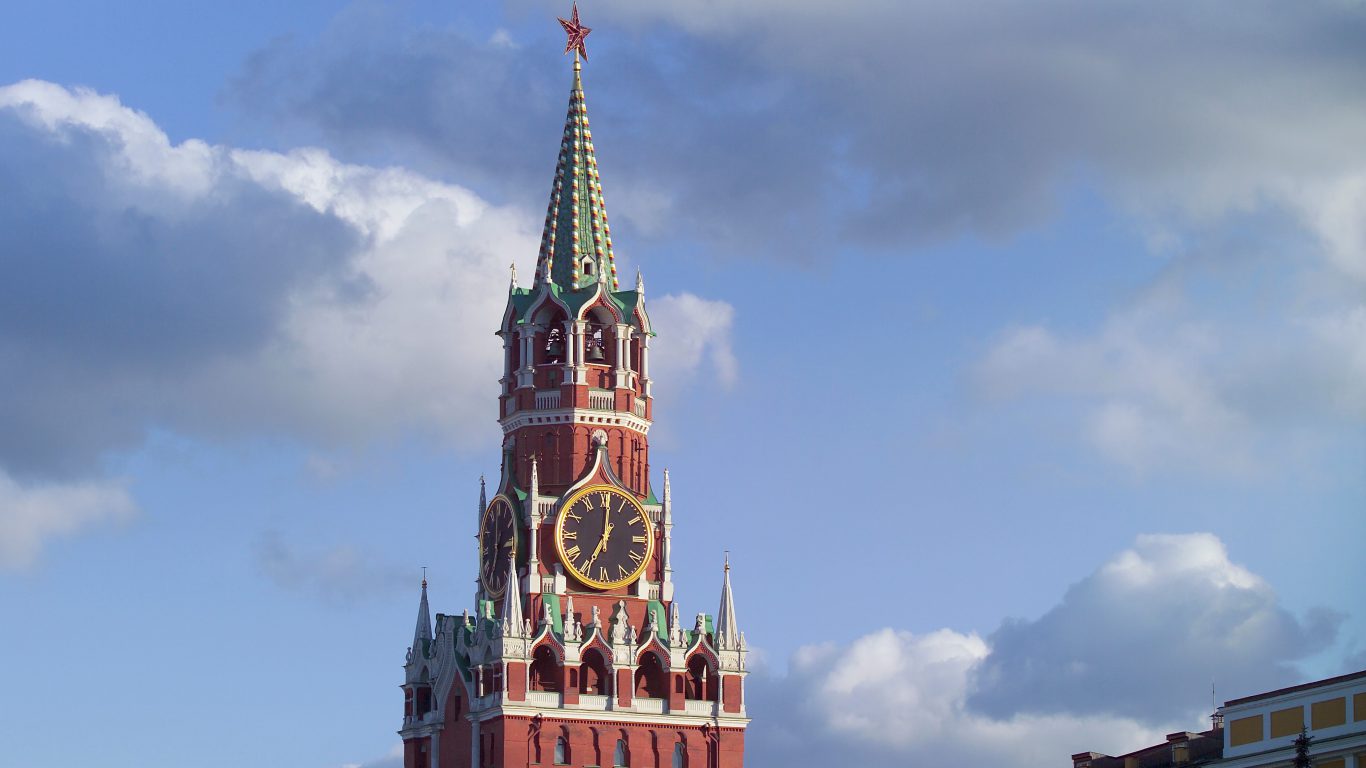
12. Russian New Year
> Country where calendar is observed: Russia
> Name of new year: Novy God
> Date of new year: Jan. 1
While it falls on the same day as the Gregorian New Year, Novy God is a distinctly different holiday celebrated mostly in Russia. When Christmas was removed from the calendar during the Soviet Union years, Russians shifted that holiday’s traditions to the new year holiday of Novy God. On New Year’s Eve in Russia, people eat and drink through the night and visit neighbors. In the morning, children wake to find presents brought by a bearded gent in a red suit called Ded Moroz, or Father Frost. Like other Russian celebrations, it is filled with many food courses and salad eaten throughout the night, including herring, pickles, stuffed cabbage, and tortes.
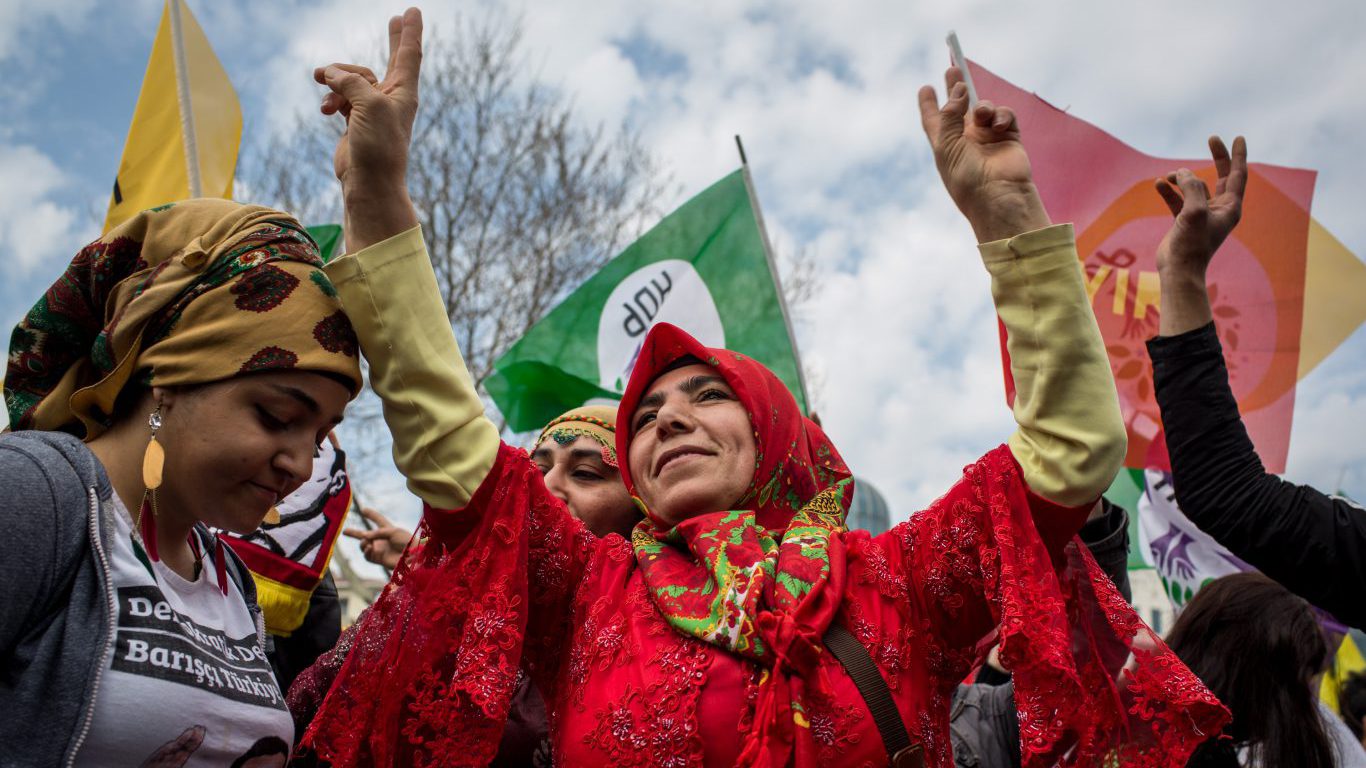
13. Iranian New Year
> Country where calendar is observed: Iran
> Name of new year: Nowruz
> Date of new year: March 21
Nowruz, the Iranian New Year, is a combination of two Persian words that mean “new day.” Before the celebration, members of the household prepare the “haft-seen” table of seven items that start with the letter S. These items can be fruits or spices. They symbolize sunrise and the spice of life, love and affection, and patience and age. Traditional food for Nowruz includes sweets such as baklava and a special noodle soup. Among other traditions, Iranians place a mirror on the table as a symbol for people to reflect on the past year.

14. Balinese New Year
> Country where calendar is observed: Indonesia
> Name of new year: Nyepi
> Date of new year: March 7
When you think of New Year’s celebrations in the United States, you more than likely picture people dancing to loud music with a drink in hand. In Indonesia, they celebrate in an entirely different fashion. On the day of Nepi, instead of shuffling around hung over from the previous night’s adventures, the Balinese spend the day in utter silence. Those who follow the religious traditions in full also stay home, don’t work, and avoid engaging in any pleasurable activities. The objective is to spend the entire day reflecting, meditating, and fasting.
[in-text-ad-2]

15. Bengali New Year
> Country where calendar is observed: Bangladesh/India
> Name of new year: Pahela Baishakh
> Date of new year: April 14- Bangladesh/April 15-India
Pahela Baishakh, the Bengali New Year, is celebrated with street fairs, musical events, and colorful marches. The day is marked by businesses opening up new ledgers to start the year. Singers perform traditional songs to greet the new year. Festive foods such as sweets are given out as gifts to friends and family.
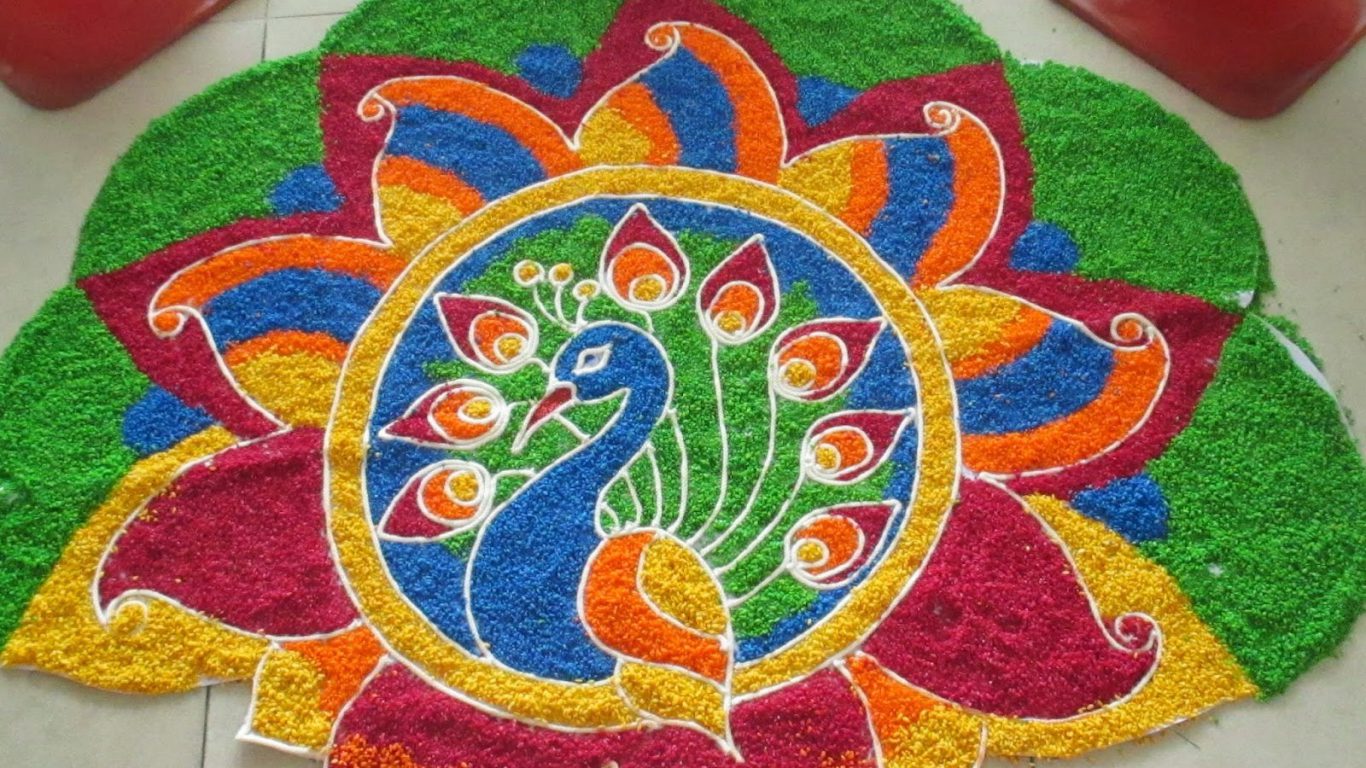
16. Tamil New Year
> Country where calendar is observed: Southern India and Sri Lanka
> Name of new year: Puthandu
> Date of new year: April 14
The Tamil New Year, Puthandu, is observed in the the first month of the Tamil solar calendar. On the last day of the old year, Tamilians prepare a tray of mango, banana, jackfruit, areca nuts, betel leaves, gold or silver jewelry, a mirror, money, rice, coconut, and flowers. The tray is viewed when people awake the next morning. Celebrants then take a bath and go to temples to seek blessings.
[in-text-ad]
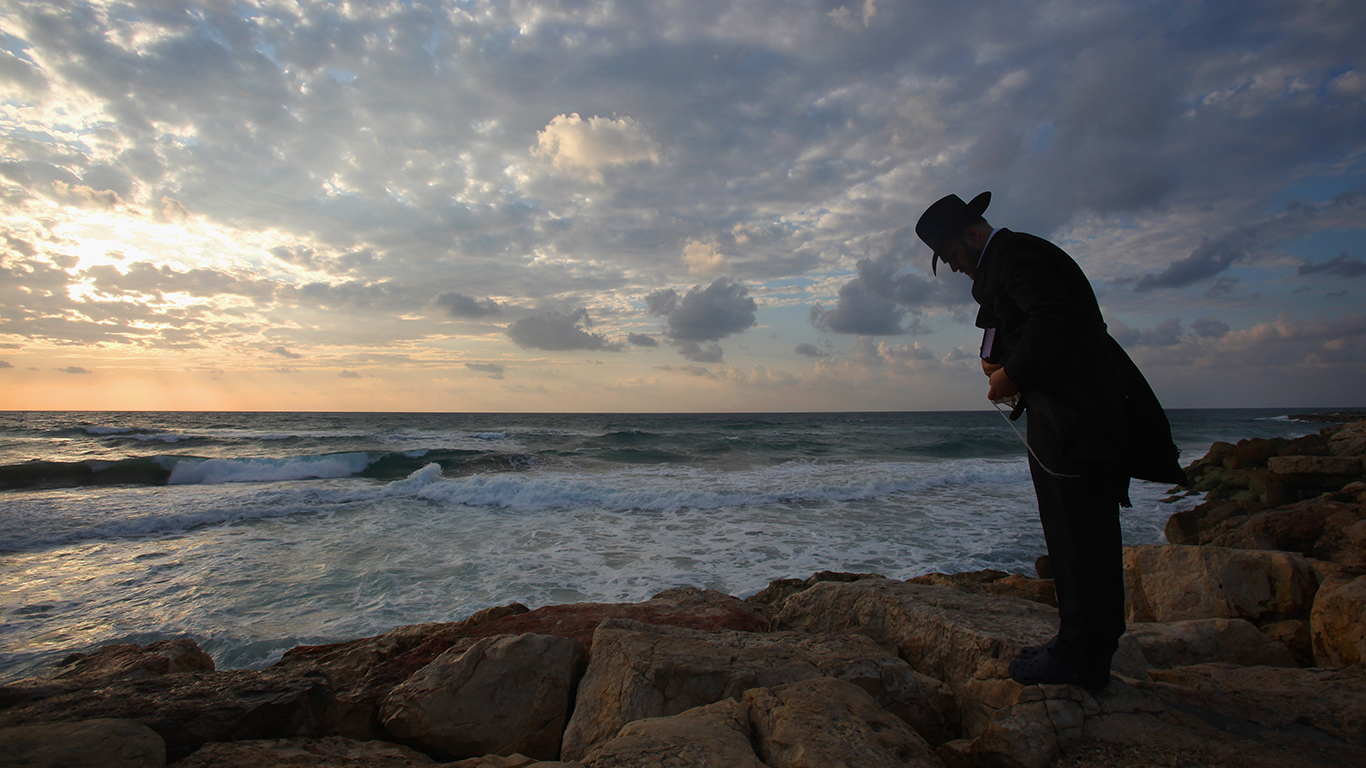
17. Jewish New Year
> Country where calendar is observed: Jewish populations worldwide
> Name of new year: Rosh Hashanah
> Date of new year: September 29
Rosh Hashanah marks the Jewish New Year. In 2019, Rosh Hashanah will begin at sundown on Sept. 29 and continue through to nightfall on Oct. 1. Customs observed on Rosh Hashanah include the sounding of the shofar, which is made from a ram’s horn, and eating special foods such as apples dipped in honey, dates, and other sweet fruit to symbolize a sweet year. During Rosh Hashanah, observant Jewish people attend services in synagogue, abstain from work, and go to a nearby body of water to cast away sins from the past year in a ceremony called Tashlich.
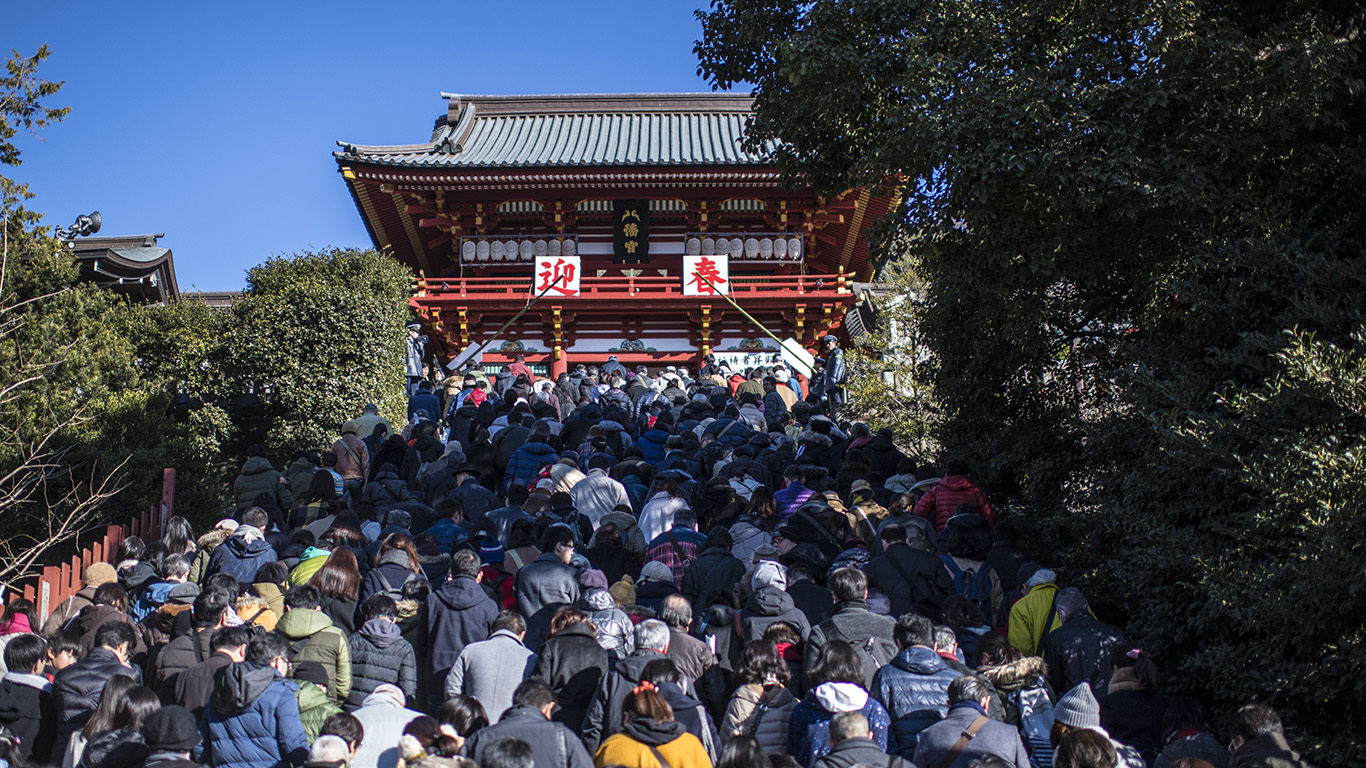
18. Japanese New Year
> Country where calendar is observed: Japan
> Name of new year: Shōgatsu
> Date of new year: Jan. 1
Similar to the Gregorian New Year, the Japanese New Year falls on the first day of January. Celebration of the new year, Shōgatsu, entails feasting on a medley of different traditional foods. For example, on the eve of New Year’s the Japanese will indulge in buckwheat noodles, which symbolize longevity. Traditional foods on Jan. 1 include osechi ryori, an array of colorful dishes packed in special boxes called jubako, prawns, and rice cakes.
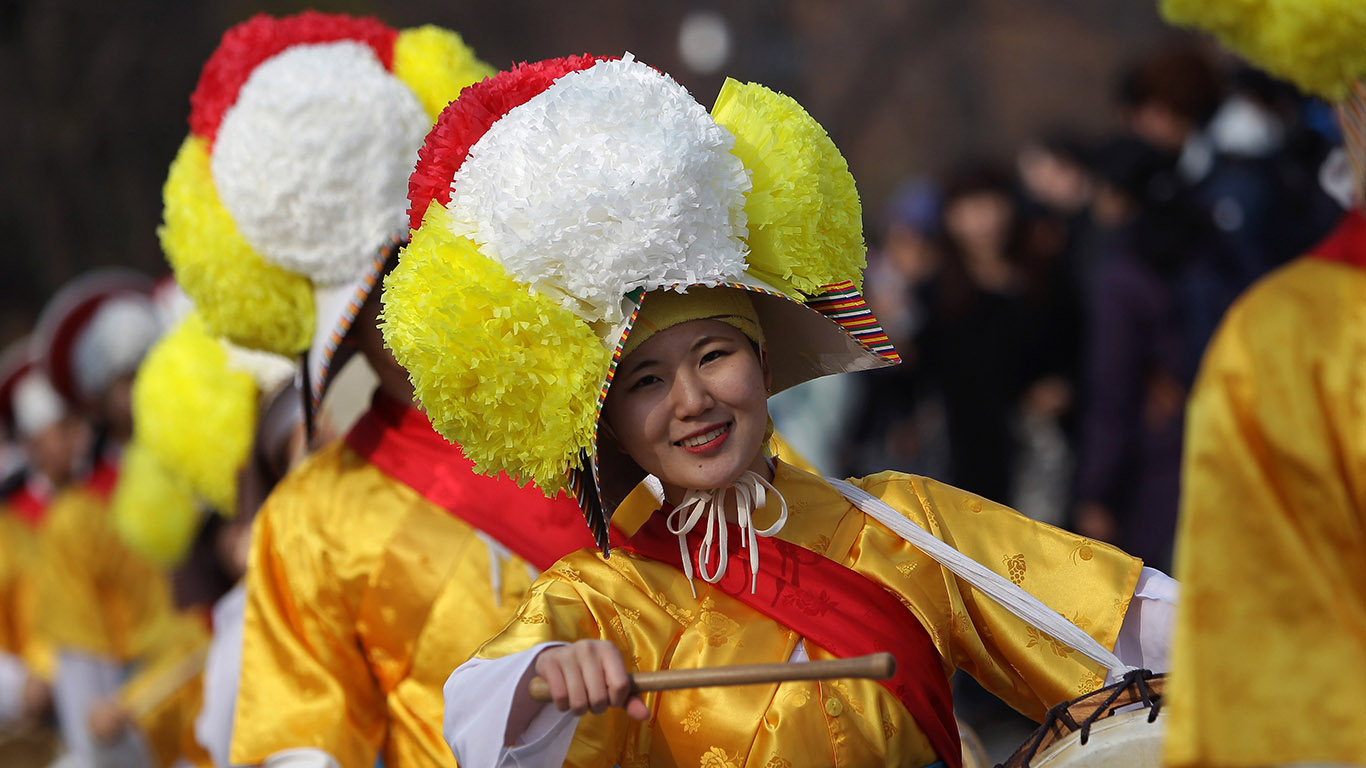
19. Korean New Year
> Country where calendar is observed: Korea
> Name of new year: Sōllal
> Date of new year: February 5
Seōllal marks the first day of the year based on the Korean lunar calendar. It will be observed on Feb. 5 this year. During the celebration, adults wear traditional costumes. Koreans also eat Tteokguk, a traditional soup eaten for the new year. A more recent ritual is the ringing of the Boshingak Bell, which was constructed in 1396 and is only rung on New Year’s.
[in-text-ad-2]

20. Thai New Year
> Country where calendar is observed: Thailand
> Name of new year: Songkran
> Date of new year: April 13-15
Songkran, the Thai New Year, means “passing” or “approaching” in Sanskrit. And the traditions of the day make for one truly refreshing experience. One New Year’s tradition involves the gentle pouring of water on elders of the community. Doing so is a way of paying respect and, in return, they bestow their blessing. Sprinkling water onto images of the Buddha is also a custom to receive blessings for the new year.
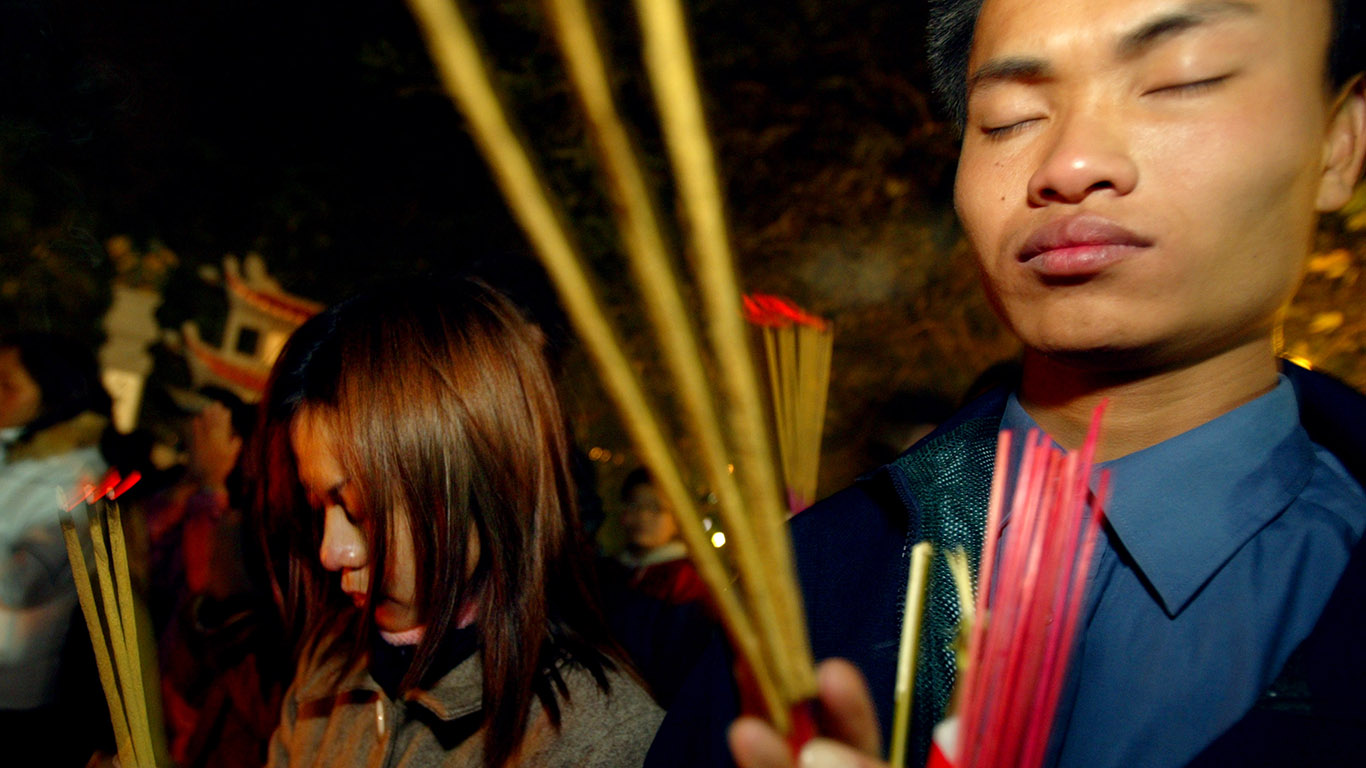
21. Vietnamese New Year
> Country where calendar is observed: Vietnam
> Name of new year: Tết
> Date of new year: January or February
Tết is considered to be the most important holiday on the Vietnamese calendar. At the stroke of midnight, as the new year begins, Vietnamese welcome the new kitchen god by beating drums and igniting firecrackers. Each day during the new year week, family members place offerings on the household altar and burn incense to remember the deceased ancestors.
[in-text-ad]

22. Burmese New Year
> Country where calendar is observed: Myanmar (formerly Burma)
> Name of new year: Thingyan
> Date of new year: Mid-April
Thingyan, the Burmese New Year, is also an extravagant water festival. The Burmese ring in the new year by participating in several water-filled activities, including spraying one another with water guns, tossing water from buckets, and pouring water from intricate silver vessels. This water frenzy lasts for three to four days, ending just in time for dinner and a night’s worth of partying at promptly 6:30 p.m.
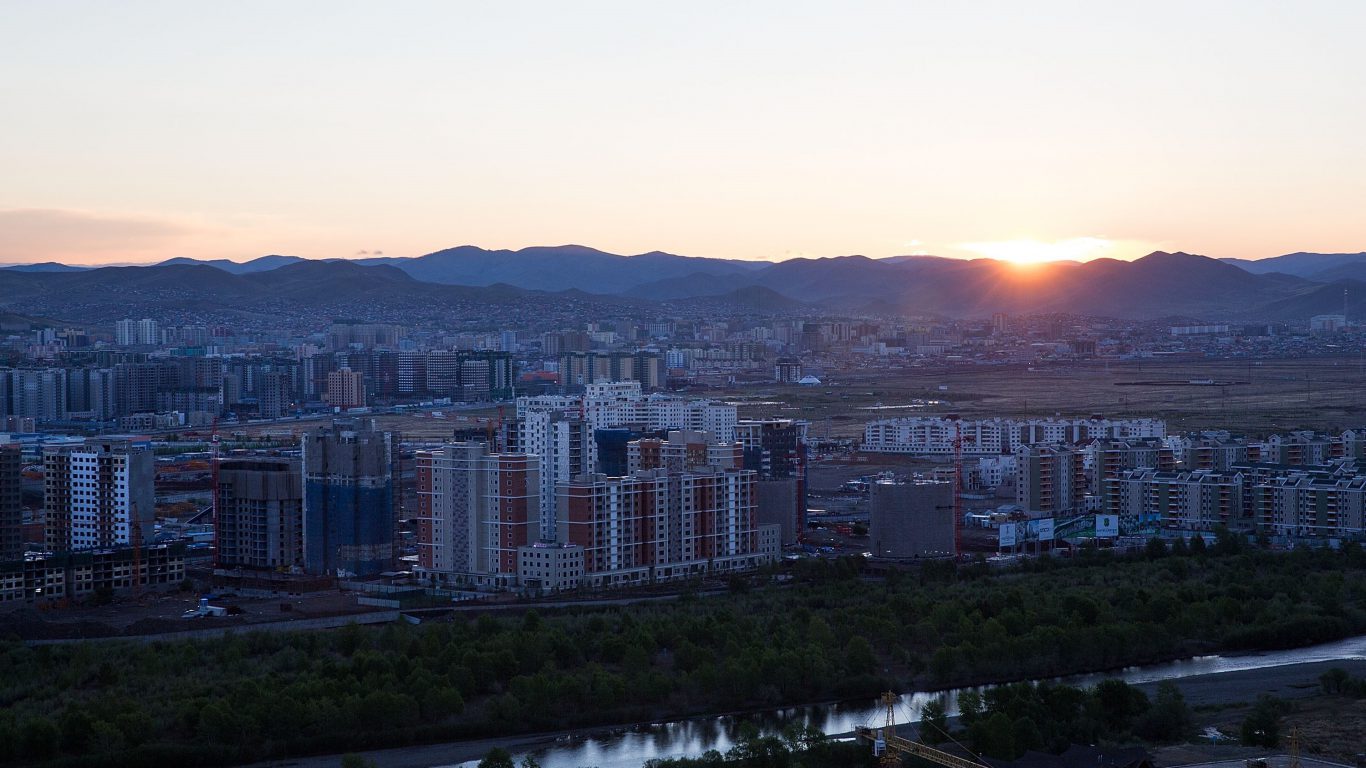
23. Mongolian New Year
> Country where calendar is observed: Mongolia
> Name of new year: Tsagaan Sar
> Date of new year: Feb. 16
Tsagaan Sar is a Mongolian New Year celebration that lasts 15 days. Over this time, people gather to renew family ties, repay debts, and resolve disputes. People dress in traditional clothes, tell stories, eat traditional dishes, play games, and practice Mongolian customs.
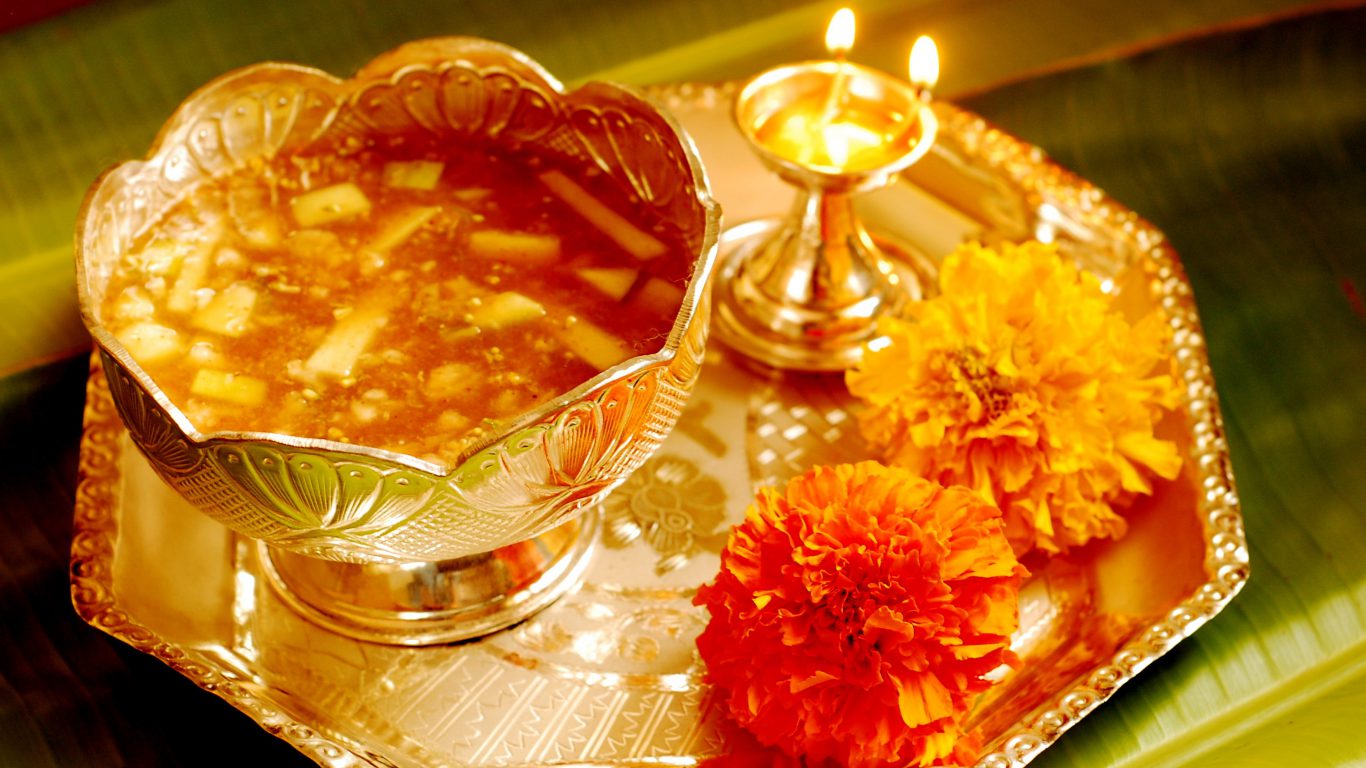
24. Telugu and Kannada New Year
> Country where calendar is observed: Southern India
> Name of new year: Ugadi
> Date of new year: Late March – early April
People living in the the southern Indian states of Karnataka, Telangana, and Andhra Pradesh celebrate Ugadi, which takes place on the first new moon after the Spring Equinox. Based on the Gregorian calendar, this day falls anywhere between the end of March and the beginning of April. Preparations for the celebration commence a week prior and include scrubbing down the house and purchasing new clothing. On the day of Ugadi, people adorn their homes with mango leaves and colorful designs made of rice, flower, sand or flower petals called Rangoli.
[in-text-ad-2]
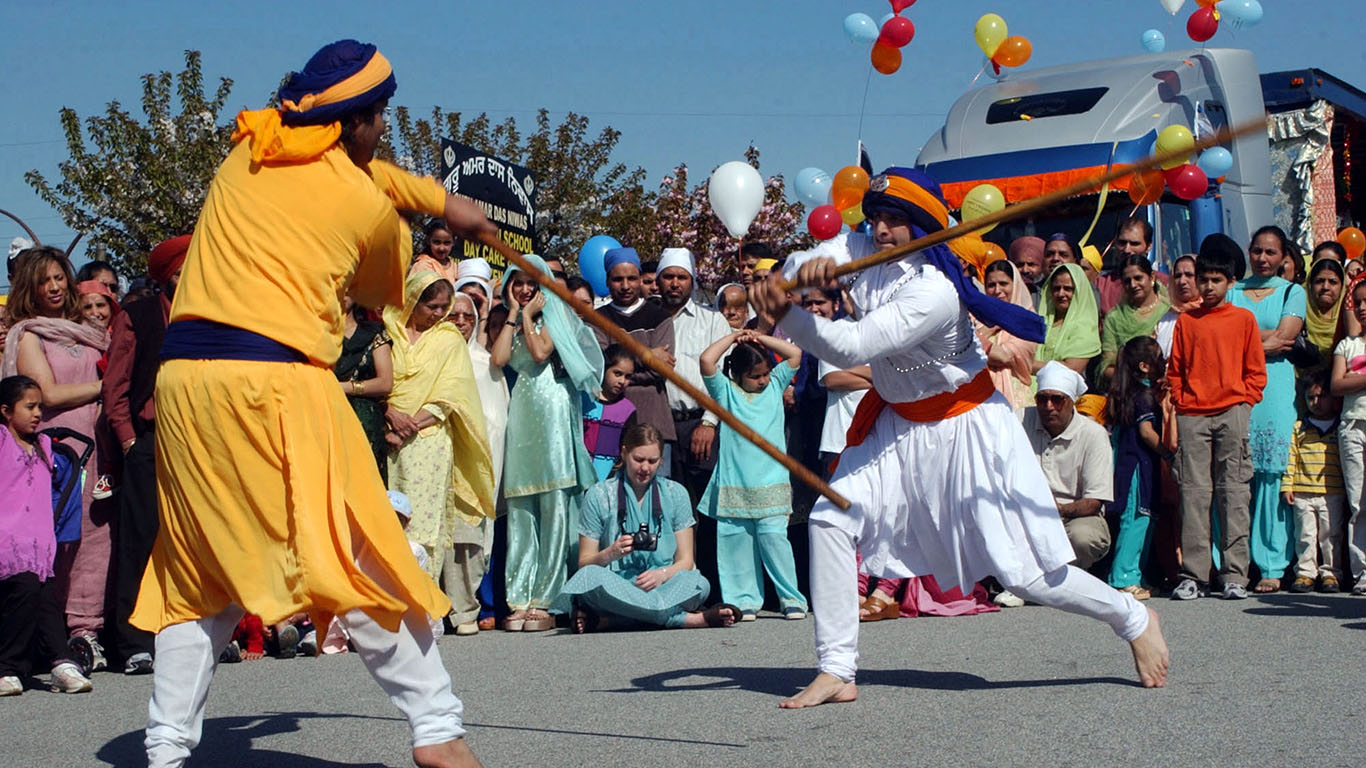
25. Pakistanian New Year
> Country where calendar is observed: Pakistan
> Name of new year: Vaisakhi
> Date of new year: April 14
Pakistanis celebrate Vaisakhi on April 14 to mark the start of spring. The day celebrates the harvest in the Punjab region of India and it is also acknowledged as when Sikhism was founded in 1699. The day is observed with processions known as a nagar kirtan and religious hymns recited from the Sikh holy book.

26. Igbo New Year
> Country where calendar is observed: Nigeria
> Name of new year: Igbo New Year
> Date of new year: Third week of February
The Igbo new year begins in February, just like the new year starts for Asian cultures such as Chinese, Korean and Indian. These cultures use the moon to calculate their months and seasons. During a festival that marks the new year, the reigning monarch of the Igbo people in Nigeria distributes yam seeds to his people and asks them to return home and farm their land.
Want retirement to come a few years earlier than you’d planned? Or are you ready to retire now, but want an extra set of eyes on your finances?
Now you can speak with up to 3 financial experts in your area for FREE. By simply clicking here you can begin to match with financial professionals who can help you build your plan to retire early. And the best part? The first conversation with them is free.
Click here to match with up to 3 financial pros who would be excited to help you make financial decisions.
Have questions about retirement or personal finance? Email us at [email protected]!
By emailing your questions to 24/7 Wall St., you agree to have them published anonymously on a673b.bigscoots-temp.com.
By submitting your story, you understand and agree that we may use your story, or versions of it, in all media and platforms, including via third parties.
Thank you for reading! Have some feedback for us?
Contact the 24/7 Wall St. editorial team.